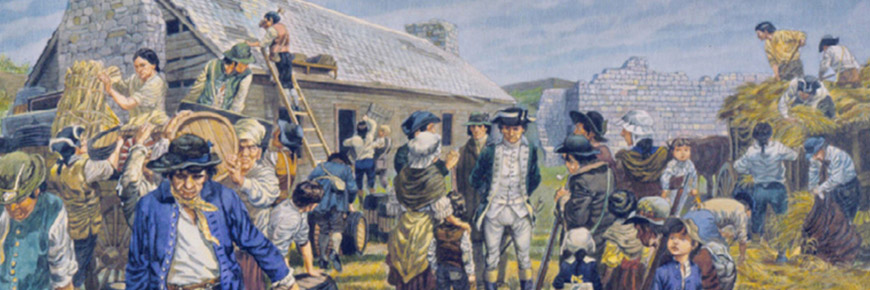
Settlers from Yorkshire
Fort Beauséjour – Fort Cumberland National Historic Site
After the Acadians were deported from the Beaubassin region, numerous settlers from New England, known as Planters, took over their lands. They were encouraged by Governor Lawrence who offered grants of 1,000 acres, as he had done elsewhere in Nova Scotia.
Like the Acadians, the Planters sold firewood and farm produce to the garrison. However, this market disappeared in 1768 when the troops were moved to Halifax. Maritime trade throughout the entire region suffered since merchants in New England, Annapolis Royal and Halifax no longer had any reason to sail to the head of Cumberland Basin. A number of Planter families thus left the Isthmus of Chignecto and returned to New England.
New settlers
In order to ensure that this strategic zone was populated, the government in Halifax turned to Yorkshire, a region in Great Britain that bore some geographic resemblance to the Isthmus of Chignecto. Lieutenant-Governor Michael Francklin visited Yorkshire in 1771 in order to recruit families who wanted to escape the high rents demanded by the aristocracy.
In March 1772 the Duke of York sailed from Liverpool with 62 passengers headed for the Isthmus of Chignecto. This first group of settlers arrived in May and, over the next five years, were joined by hundreds of British settlers from all walks of life.
The Yorkshire's families
Some of the family names associated with these pioneers are Black, Lusby, Dixon, Lowther, Chapman, Morrison and Trueman. Some of the professionals, merchants and farmers brought their servants and tenants. A number of the settlers became significant landowners by purchasing large tracts of cultivated land, which at the time, included some of the most productive farms in the British colonies.
It was not long before Yorkshire settlers became public administrators. In fact, the government in Halifax counted on them to offset the influence of some of the Planters who were sympathetic to the cause of the American rebels.
Next part: The 1776 siege of Fort CumberlandRelated links
- Long before the Fort: Acadian settlement
- First warfare
- Zone of contention, place of growth
- The construction of a fort at Beauséjour
- Life inside the Fort during the French regime
- The Acadians and the fort
- Tensions of the 1750s
- The siege of 1755
- The deportation of the Acadians
- The start of the British occupation
- The 1776 siege of Fort Cumberland
- Changes to the fort after the second siege
- Creation of the national historic site
- Archeological digs
- Date modified :